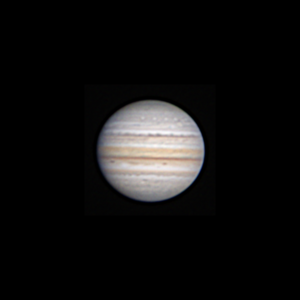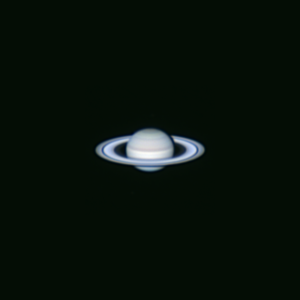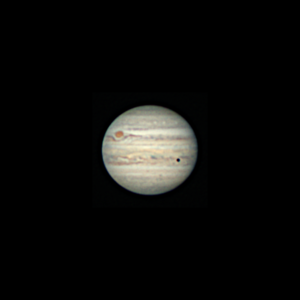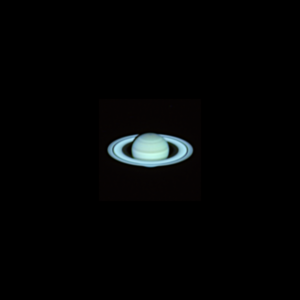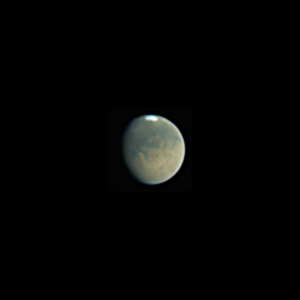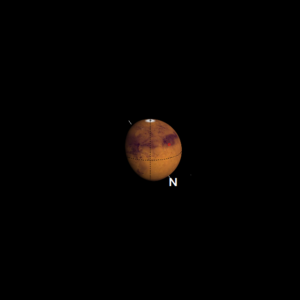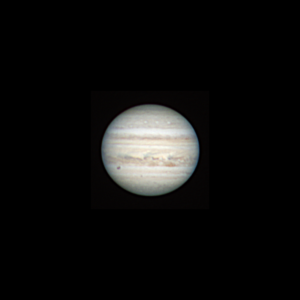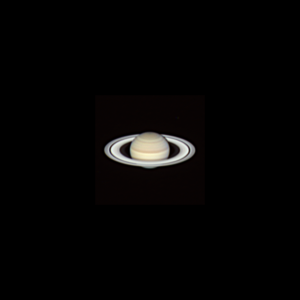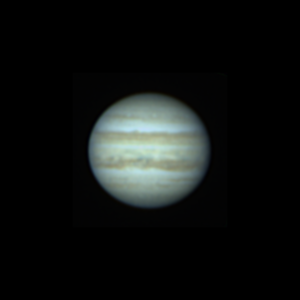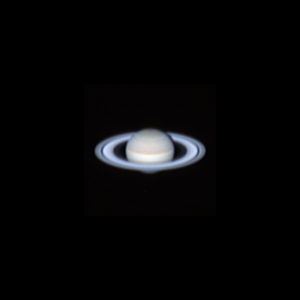Here is my contribution to the 2020 Great Conjunction hoopla. While it is rare to see a conjunction where both celestial bodies can be seen in the same telescopic field of view, from an astronomical point of view, the event was no big deal. On average, Jupiter and Saturn have a conjunction every 19.76 years. The frenzy was only due to the apparent closeness of the two as viewed from planet Earth.
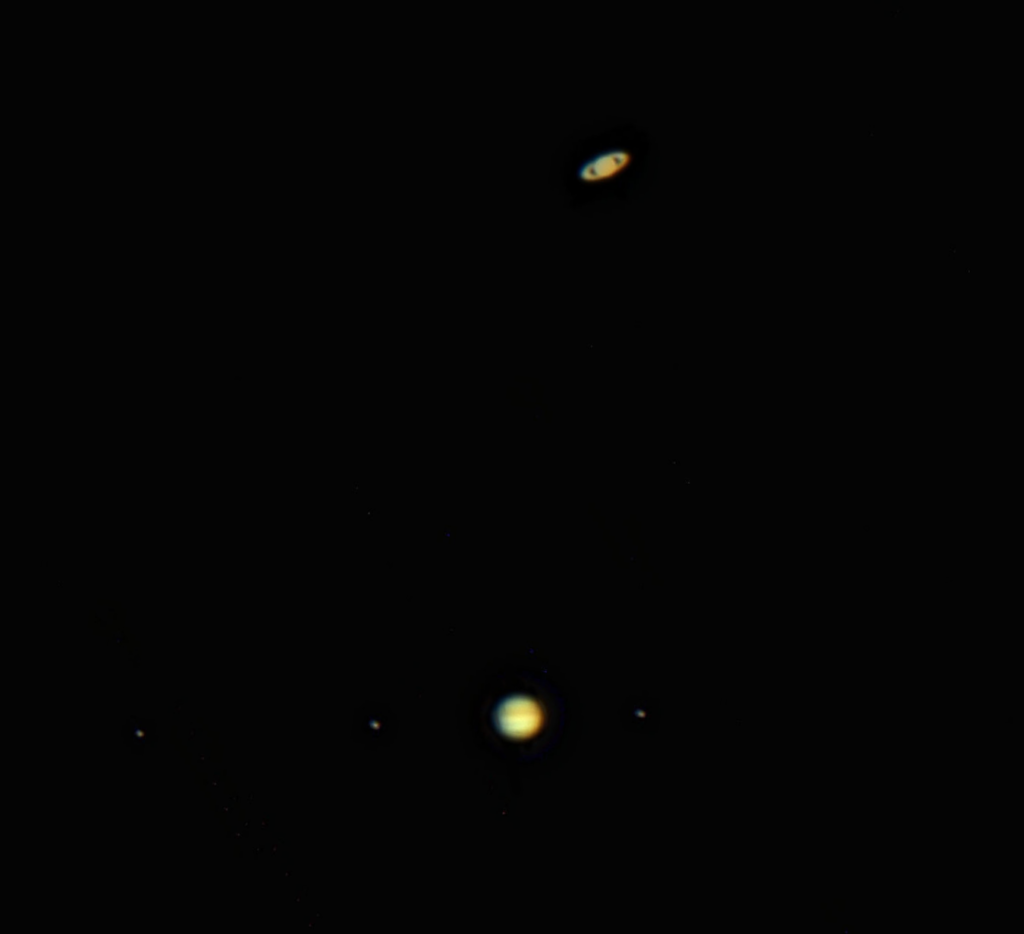
Jupiter/Saturn conjunction
Even so, I tried to get an image when the two planets were actually closest to each other at 1200 CST but even though they had cleared the trees they were just not bright enough against the sky to get a good photo. The pair would be obscured by trees before it got dark so that meant packing up equipment and heading to another location. In fact, it involved two sets of equipment since my oldest son Chris would be joining in.
I really should have taken my planetary camera off the main telescope and brought it along but that camera would have meant additional cabling, a PC, another power supply, much longer setup and a more precise telescope alignment. My DLSR doesn’t require such an extensive life support system so I brought it instead. I chose poorly. The field of view the camera saw through the telescope was huge. This meant I had to zoom in quite a bit in order to see any detail at all. But since each planet only covered a small patch of pixels, very little detail is apparent.
The annotated image identifies the three Jovian moons that are visible. Ganymede is the one that is missing. It just started to cross in front of the planet and is lost in the glare on Jupiter’s left edge.
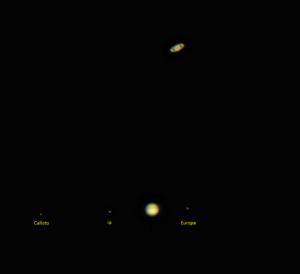
Jupiter/Saturn conjunction (annotated).
This photo is a composite of three separate images. Saturn is roughly 500,000,000 miles further from the Sun than Jupiter, so it is much dimmer when photographed. To make it visible, the exposure is lengthened to the point that Jupiter is grossly over exposed. To make the moons visible, the exposure is lengthened even more. So the image is a composite of a long exposure for the moons, a shorter exposure for Saturn and an even shorter exposure for Jupiter.
